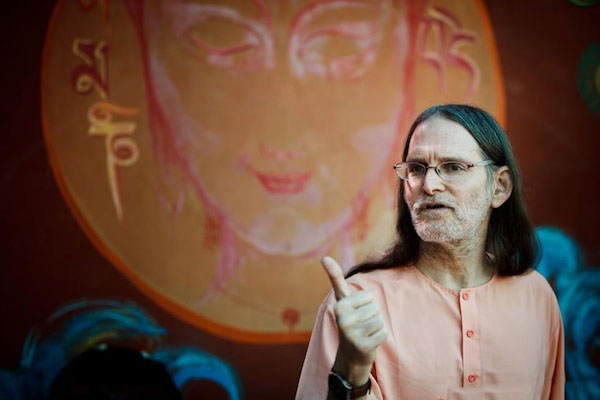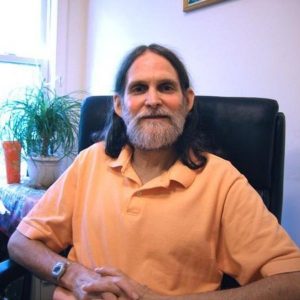 In this article, Swami Asokananda reflects upon the journey that took him from novice pranayama student to one of Integral Yoga’s master teachers. He shares the challenges and triumphs of having a regular pranayama practice, as well as the insights and wisdom he gained along the way
In this article, Swami Asokananda reflects upon the journey that took him from novice pranayama student to one of Integral Yoga’s master teachers. He shares the challenges and triumphs of having a regular pranayama practice, as well as the insights and wisdom he gained along the way
One of the goals of Yoga is to know, before leaving the body, that we are not the body. If, at the time death, we still believe that we are the physical body, our departure will likely be a difficult experience. Our whole existence has centered on the body, and now that it is fading, our universe is being dramatically turned upside down.
Sri Gurudev Swami Satchidananda has emphatically stated many times that our consciousness continues to exist after death of the body. While this body is still alive and kicking, it is important to stabilize our attunement to more subtle levels of our being. Then when the time comes to depart the body, we can go through the experience without fear. Death becomes a critical juncture where it is possible to move beyond all illusion, purify our past karma and rest in our True Nature.
Death is one powerful reason why it is so important that we become familiar with our pranic body through regular pranayama practice. Gurudev has talked about the importance of dying with the right thought in our mind. Whatever final thought we have will have a potent effect on the next direction of our soul. If our awareness is accustomed to perceiving ourselves as an energy being, our anxiety will lessen, even our physical pain will lessen and we can depart calmly and maybe even joyfully.
When I started practicing Yoga many years ago, right away I was deeply attracted to pranayama. I grew up with pretty severe asthma and I intuitively knew that these practices were just what my lungs needed. I loved what asanas did for me, but I was even more profoundly affected by the yogic breathing practices. When I read that asanas traditionally were designed as a preparation, a method of strengthening and purifying the body for the demands of pranayama, it confirmed for me that I was heading in the right direction. And when I was introduced to the Hatha Yoga Pradipika, it was interesting for me to note that it devoted more than twice as many verses to pranayama than to asanas.
I was also captivated by pranayama because of an experience I had shortly after starting the practice. I was living at the Integral Yoga Institute (IYI) in Hartford, Connecticut. Sri Gurudev had great faith in us, so even though I was 19 or 20-years old, with little worldly experience, he placed me in charge of the IYI. One person at the IYI took a strong disliking to me. It was either a karmic relationship from my past or I was so incompetent as the leader of the center that he couldn’t accept me in my role. My bedroom was just off the reception area, so I heard him, when, one day he came in and asked for me. He didn’t sound very happy. When the receptionist told him that I wasn’t available, he said that he would wait. I was doing some nadi suddhi and tried to focus on the practice rather than be anxious about the upcoming interaction. After about 10 minutes I walked out of my room, and the man blasted me with an onslaught of anger. But I was shocked to find that his intense energy simply passed through me without getting stuck anywhere in my system. I knew that he was enraged by looking at his face, but my body/mind did not experience it as negative. At that moment, I bowed down to pranayama. I had been given a glimpse of its power. If I didn’t react to this angry fellow, I thought that pranayama would make me invincible! I became a true believer.
I started my pranayama practice by reading a book on Yoga that recommended inhaling for 8 counts, holding for 32 counts, and exhaling for 16 counts. I could almost get through one round, but my face would start turning red. By the second round, it was more bluish and by round 3, if there was one, I had a unique grayish pallor. Luckily, in a short time, the universe led me to the book, Integral Yoga Hatha by Sri Swami Satchidananda. I quickly flipped to the section of pranayama, and was surprised to see that he didn’t recommend any retention of breath in the beginning. Following the instructions in the book, I began with a simple practice of inhaling to the count of 3 and exhaling to the count of 6. Wow, what a difference! I could do the Yoga breathing without strain!
Over the next two years I went through a very systematic program of pranayama, giving particular focus to building up my nadi suddhi practice. I would practice for 30 minutes in the evening and at first made fairly quick progress. I went from 3:6 to 4:8 and gradually up to 8:16 in a few months. In Integral Yoga Hatha, Gurudev spoke about the importance of not straining in the practice, so even though there was an impatient part of me that wanted to keep going forward, I had to recognize that 9:18 was not coming very comfortably. One month passed, then two months—I couldn’t in good conscience ignore the sensations of the body that indicated that 8:16 was the edge that I should not push past.
Then after about 9 months at 8:16, 9:18 became comfortable. And 10:20 came shortly after that. Maybe I broke through some block; whatever it was, I was satisfied that I took my time and honored my capacity. Now I was ready to move on to sukha purvaka—nadi suddhi with retention.
Again, I followed Gurudev’s instructions carefully. I started with a 5-second retention, making my count 10:5:20. When that was comfortable for 2-weeks straight, I moved to 10:10:20. As before, I took my time, listened to the body’s intelligence and enjoyed the journey. The focus in this process was on the quality of my inhalation after the long slow exhalation. What I was looking for was a smooth, unhurried transition to the inhalation, making sure that the retention did not disturb the easy flow of the breath. If there was a need to quickly grab the incoming breath, it meant that I needed to cut back the retention.
Once I was established in a count, I never liked having to backtrack to a lesser count. I took it as some sort of personal shortcoming of having lost the ground once gained. Usually the cause was food still in the belly that needed to draw prana for digestion. But sometimes I could not find a cause to my difficulty in maintaining a count that had already become comfortable. Maybe the weather was a factor; I’m sure when my mind was distressed my breathing was off.
Over the years, though, I have learned that it is never worth pushing in my pranayama practice. Whenever I strained, I found it had the opposite effect; instead of feeling energized, my prana felt depleted. Instead of a deep sense of well-being and balance, my mind felt agitated and irritated. Sometimes I’d be surprised about how much I had to cut back my count to find the place where the breath flowed smoothly. But then, when I finished my practice, I felt amazing! I had to ask myself, what was more important: Sticking to a certain count or getting the benefits of my practice. I’m proud to say that I made the sane choice.
It took me about another year to reach the count of 10:40:20—the count that Gurudev says is the final stage. After about 40 years, I’m still sticking to my half hour practice in the evening—it’s one of my favorite parts of my day.
The Hatha Yoga Pradipika says: “All the pranayama methods are to be done with a concentrated mind. The wise person should not let the mind be involved in the modifications (vrittis).” I’m happy that it doesn’t say that we should not have vrittis, or that we should stop them. Because when I am doing this slow, deep breathing and retaining the breath for so long, after some time stuff starts to percolate up to the surface. Much of it is random nonsense but, if there are any unresolved issues or unprocessed experiences in my subconscious (which there usually are), as my conscious mind quiets down, these will rise into my awareness. I will try not to “let the mind be involved in the modifications,” but I will take note of the content and then go back to my focus on the breath.
After my practice, I will spend some time with my spiritual diary reviewing what came to the surface. It is a blessing (though sometimes a painful one) that my practice gave me a glimpse of what would normally be in my blind spot. I’ll use the diary time to explore this more consciously so that, when I turn in for sleep, my subconscious doesn’t have to keep working on this stuff through the dream state. I can sleep more soundly and wake up more refreshed.
I am so grateful to Gurudev for sharing these breathing practices with us and to the ancient yogis who discovered them. Pranayama has vastly improved my quality of life and I believe, when the time comes, these practices will also benefit the quality of my experience of leaving this body.

Swami Asokananda, a monk for over 30 years, has the look of an ascetic but the down-to-earth wit that shows his New York City roots and his three decades of study with the great Yoga master Sri Swami Satchidananda. He helped to develop and facilitates Intermediate and Advanced Integral Yoga Hatha Teacher Training programs, which he has taught to students in many parts of the world. He is also a scholar of the Bhagavad Gita. His popular classes and workshops on this great Indian scripture make it accessible and useful to modern spiritual seekers. Both practical and mystical, Swami Asokananda is one of the most requested Integral Yoga speakers, presenting programs worldwide, including presentations at Yoga conferences. He currently directs the Integral Yoga Institute of New York.
From: Integral Yoga Magazine, Fall 2010

